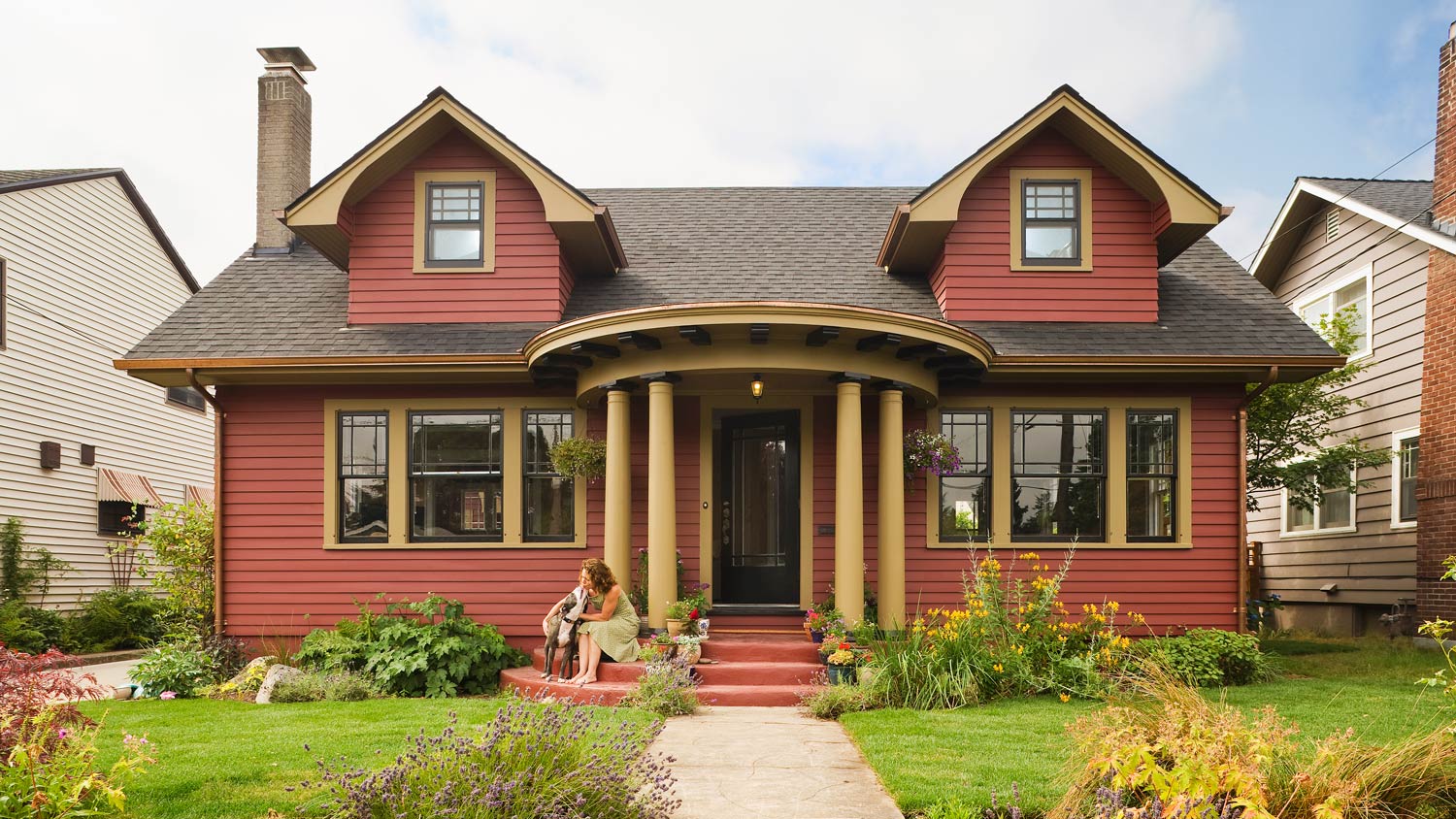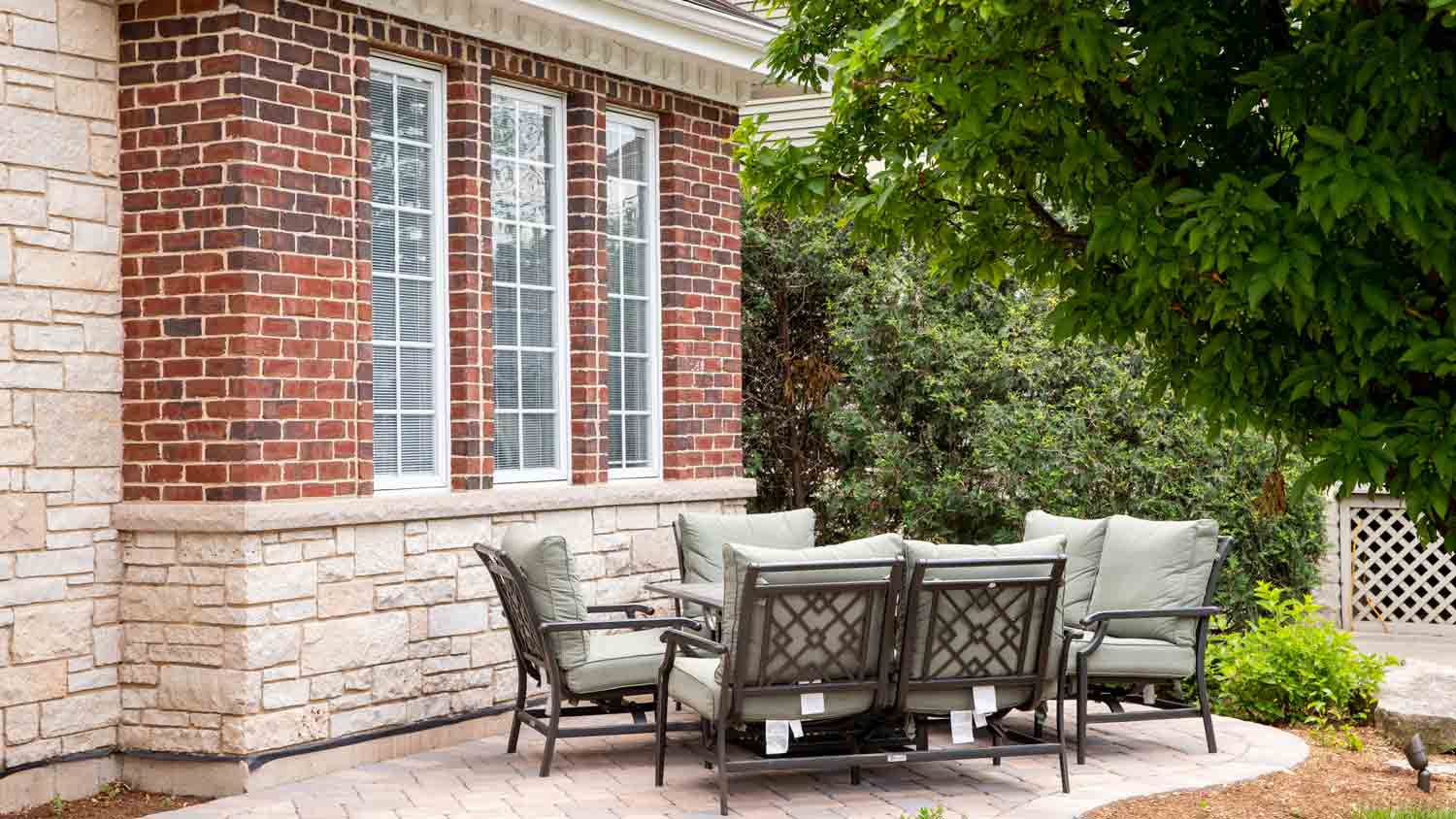
Door or window lintel replacement costs $400 on average, but there are ways you can save. On the other hand, complicated work will increase costs considerably.
Sealing brick seems like a great choice, but it can do more harm than good.


Brick and mortar are naturally breathable, and sealant can impede the moisture release.
Most new homes take climate into account when using brick, so moisture is a non-issue.
You can seal interior brick to protect it against humidity, but it’s not typically necessary.
Only use breathable sealant if you decide to seal your brick walls.
While most of us think we should seal pretty much anything outside, like our fence or patio furniture, brick is often the exception to the rule. Brick and mortar are two naturally moisture-wicking materials that, when installed and maintained correctly, should release moisture on their own without a sealant. In fact, most experts agree that using a product can actually seal in moisture rather than protect it from escaping—breaking down your bricks faster than you can stack them.
Let’s outline the few times when brick sealant is a good idea and explore how different sealants stack up to one another in this article.
Sealed brick walls are brick walls that have been sealed by a sealant, typically either silane or siloxane. These two materials are designed for porous materials like brick to help aid in the moisture release process while still protecting the material from the damage of the sun’s rays or extra rainy days. Sealant also helps simplify brick maintenance and cleaning by providing a flat surface that’s easy to wipe down.
But, because brick is specifically made to tackle moisture without a sealant, you probably don’t need it. Think about all the brick buildings and roads still around today without these new products. As one of the oldest materials, brick is known for its longevity and durability—without the need for a top coat.
Sealant is designed to prevent moisture from entering materials, so adding a layer of protection can help combat that. This could be helpful if you live in an area with a lot of rainfall, such as the Pacific Northwest, or areas with intense freezes.
Chat with a local mason in your area to see what they recommend for your home.
With all its crevices, nearly all types of brick naturally attract dirt and grime. They also fade over time (although most agree this is what adds to its charm). Adding a sealant like a siloxane sealant can help combat UV rays and add a barrier against everyday mess. This is especially good if you add brick inside, like in your kitchen or walkway areas.

There’s only one real con to sealing brick walls, but it’s a big one: Sealing brick can actually trap water in your walls and create a much bigger problem than the (non-existent one) you had to begin with. Unless your wall is starting to crumble or the brick is inside, you really don’t need to seal your brick. It will release moisture on its own, and adding a sealant can do the exact opposite of what you’re hoping for.
Most experts agree that, in most applications, brick sealing is unnecessary.
The best alternative is to paint your bricks instead. The process for painting a brick house is similar to applying sealant but can reduce the concern of fading or other appearance issues. That being said, it still can lead to the same issue of trapping moisture, leading to paint bubbles, peeling and other unsightly issues.
You could also try staining your brick, like with a limewash or masonry stain, to achieve a new look without running the risk of trapped moisture. You can also pressure wash brick when it’s stained, but not painted (unless you’re willing to bust out the paint brush afterwards)
Nine times out of ten, the answer to this question is no. Brick is designed to naturally remove water, and when you add a layer of sealant to it, you can actually either trap water in or prevent the cycle of evaporation. There are only a few times when sealing brick is recommended:
Your brick is starting to crack, or there’s water damage. Sealing the brick can prevent further damage without completely rebricking your home and paying the high cost of bricks, although you still run the risk of trapping moisture.
You have brick inside. While it’s still unnecessary, sealing the brick inside is less risky than outside, as there’s less moisture to worry about. Sealing interior brick can help it stay the color you want and prevent dust buildup without the risk of fading over time.
You bought a home with previously sealed brick. If the homeowners sealed the brick already and it’s starting to wear down, you’ll need to reseal it. Unfortunately, they’ve trapped you in this endless cycle, and you’ll have to keep it up.
From average costs to expert advice, get all the answers you need to get your job done.

Door or window lintel replacement costs $400 on average, but there are ways you can save. On the other hand, complicated work will increase costs considerably.

The cost to brick a house depends on several factors, like labor costs, home size, and brick types. Use our guide to estimate your bricking costs.

Need to repoint brick in your home to make your home look fresh and new? Use this guide to repointing brick cost to price out your project before starting.

A bowing foundation wall can quickly become a major structural problem for your home. Learn why your wall is bowing and what you can do to fix it.

Discover the common masonry problems that can harm stone or brick surfaces at your home. While some masonry issues can be fixed with DIY solutions, anything involving brick replacement should be done by a professional.

The steps for how to repoint brickwork aren’t necessarily difficult, but they do stack up quickly. See what this project entails to determine whether it’s best left to a pro.